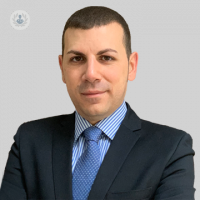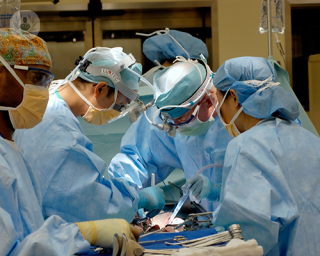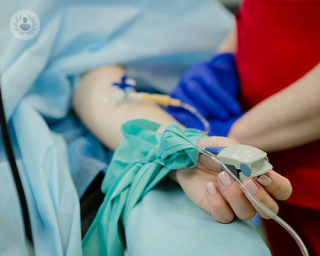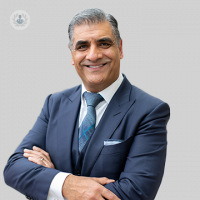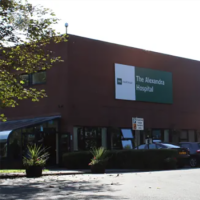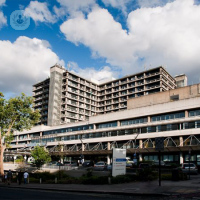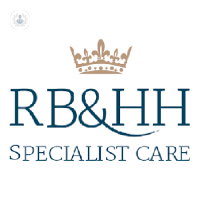Mitral valve repair (minimally invasive)
Mr Alberto Albanese - Cardiothoracic surgery
Created on: 06-06-2018
Updated on: 09-15-2023
Edited by: Aoife Maguire
What is mitral valve repair (minimally-invasive)?
The mitral valve is a one-way valve that pumps blood into the left side of the heart. When open, the mitral valve pumps oxygenated blood into the left ventricle. When the blood is squeezed from the left ventricle to be delivered to the rest of the body, the mitral valve should close to prevent blood from flowing backwards, towards the lungs. If there is mitral regurgitation, problems such as heart failure can develop. Symptoms of a faulty mitral valve may show as breathlessness, poor fitness endurance and swelling of the limbs.
To treat this fault, surgery of some description is usually required, whether it be repaired or replaced. Surgery can be done as open surgery, which involves a large incision being made, with access to the heart begin gained by temporarily removing part of the breastbone. However, repairs can also be done minimally-invasively. These make use of specialised hand-held instruments or robotic devices.
Why is it done?
A minimally-invasive mitral valve repair is done because it has the following outcomes for the patient, compared to traditional open heart surgery:
- Shorter hospital stay
- Shorter recovery period
- Less pain
- Smaller scars
- Fewer wound complications
What does it involve?
Minimally-invasive mitral valve repair surgery is performed by a surgeon making a small 4-6cm incision on the right side of the chest instead of a large midline-incision and division of the sternum used in traditional open surgery. The surgery is performed through the small space between the ribs. A heart-lung machine is inserted through a small incision in the groin, allowing the heart to be stopped during repair of the valve. The surgeon is able to insert specialised minimally-invasive instruments between narrow spaces between the ribs after a soft retractor is inserted. An endoscope provides high-resolution imaging of the mitral valve. This surgical technique means that the stability of the chest is preserved and that a minimal scar is left during the recovery of the patient.
How do you prepare for a minimally-invasive mitral valve repair?
Prior to surgery your suitability for this type of repair will have been determined with a physical examination, CT scans, echocardiogram, chest X-ray, ECG and blood tests. The operation can last up to five hours. The following preparation is required before your operation:
- Hair removal from around the operation site
- Showering the night before the procedure
- Pre-medication may be given prior to surgery which can help you feel relaxed
- Anaesthesia – general anaesthesia is used for this procedure.
Aftercare
Recovery length will vary between patients. Immediately following surgery you may be connected to a ventilator machine to assist with breathing for a few hours. Once you can breathe on your own the ventilator is removed and sedation is reduced. You will then have an oxygen mask placed over your nose and mouth instead. A urinary catheter will also have been inserted which is monitored by hospital staff. Pain relief is given, either by staff or by using a PCA (Patient Controlled Anaesthesia). You will also have a number of drips to deliver medications needed, and drains to remove fluid and air surrounding the heart and lungs after surgery.
By the end of week one you should be able to move around your house, but lots of rest is important. By week three you will be more active and should try to walk around each day. You will also start to attend cardiac rehabilitation classes at this point. By week six you should be able to do most tasks, but no heavy lifting or strenuous activity. By week eight you are reviewed by the outpatient department.
Alternatives to this treatment
Open surgery is an alternative, and often this is recommended to older patients who might have other cardiovascular problems that need to be treated as well. The surgery will be performed by a cardiothoracic surgeon.
